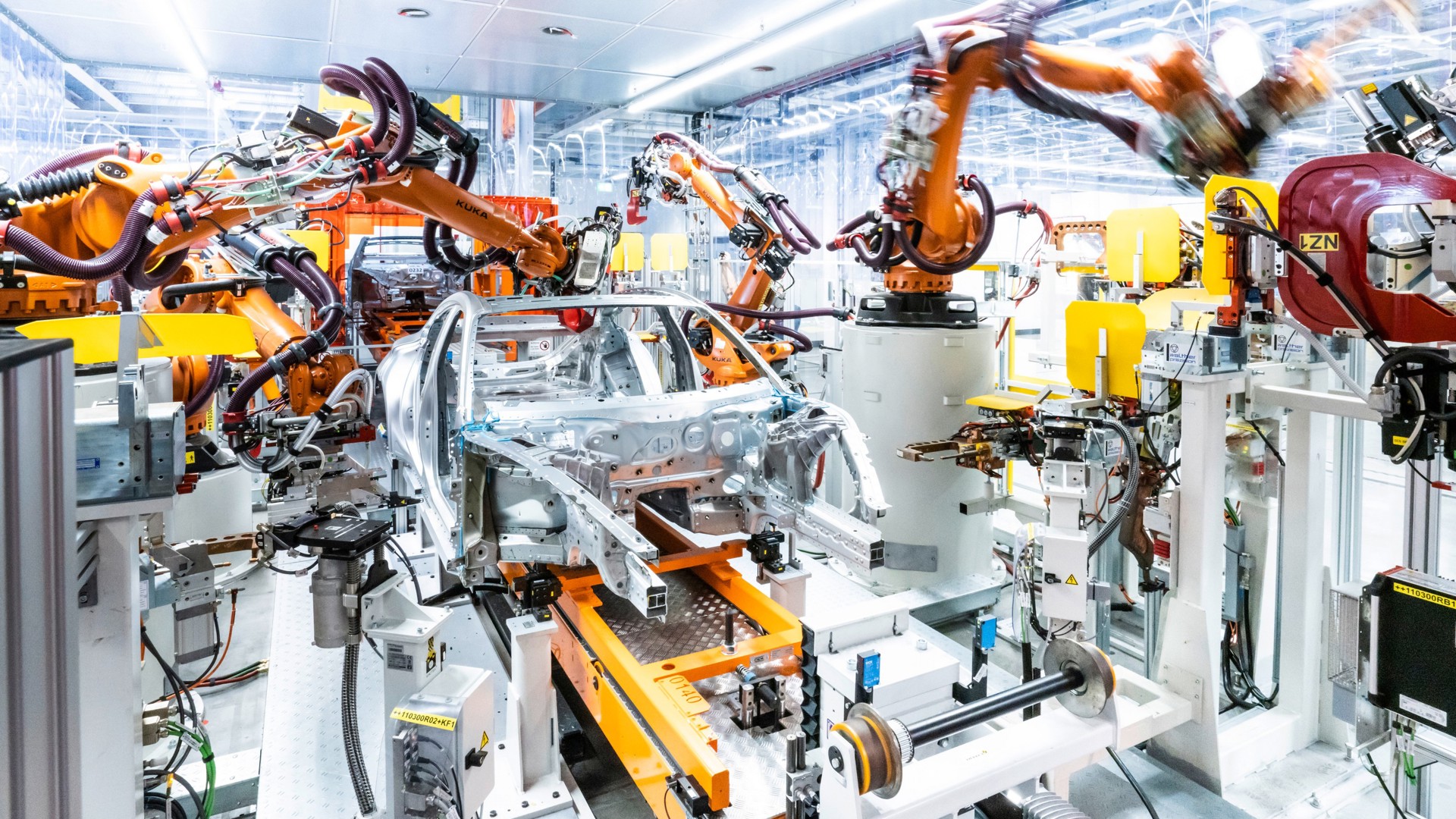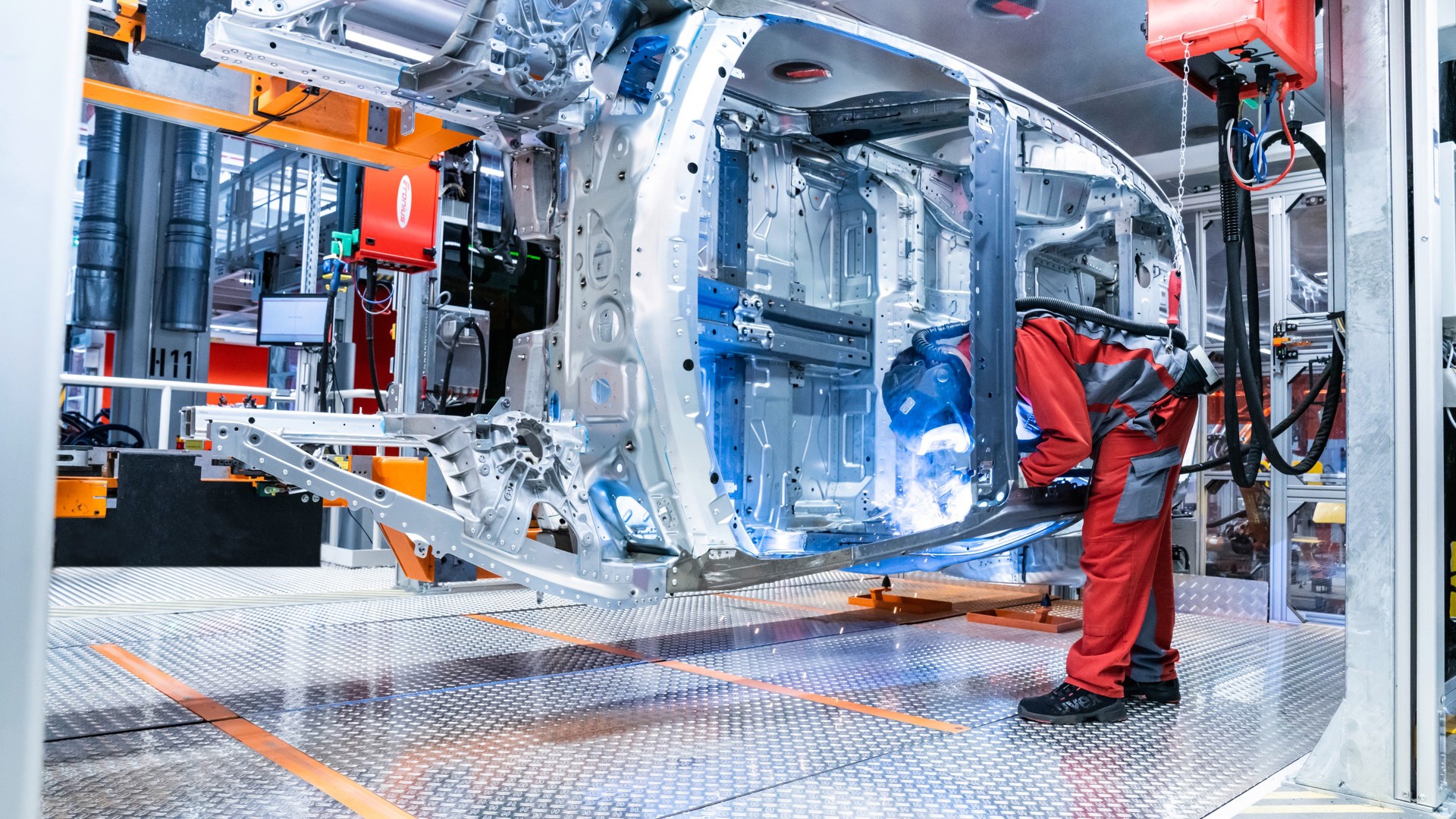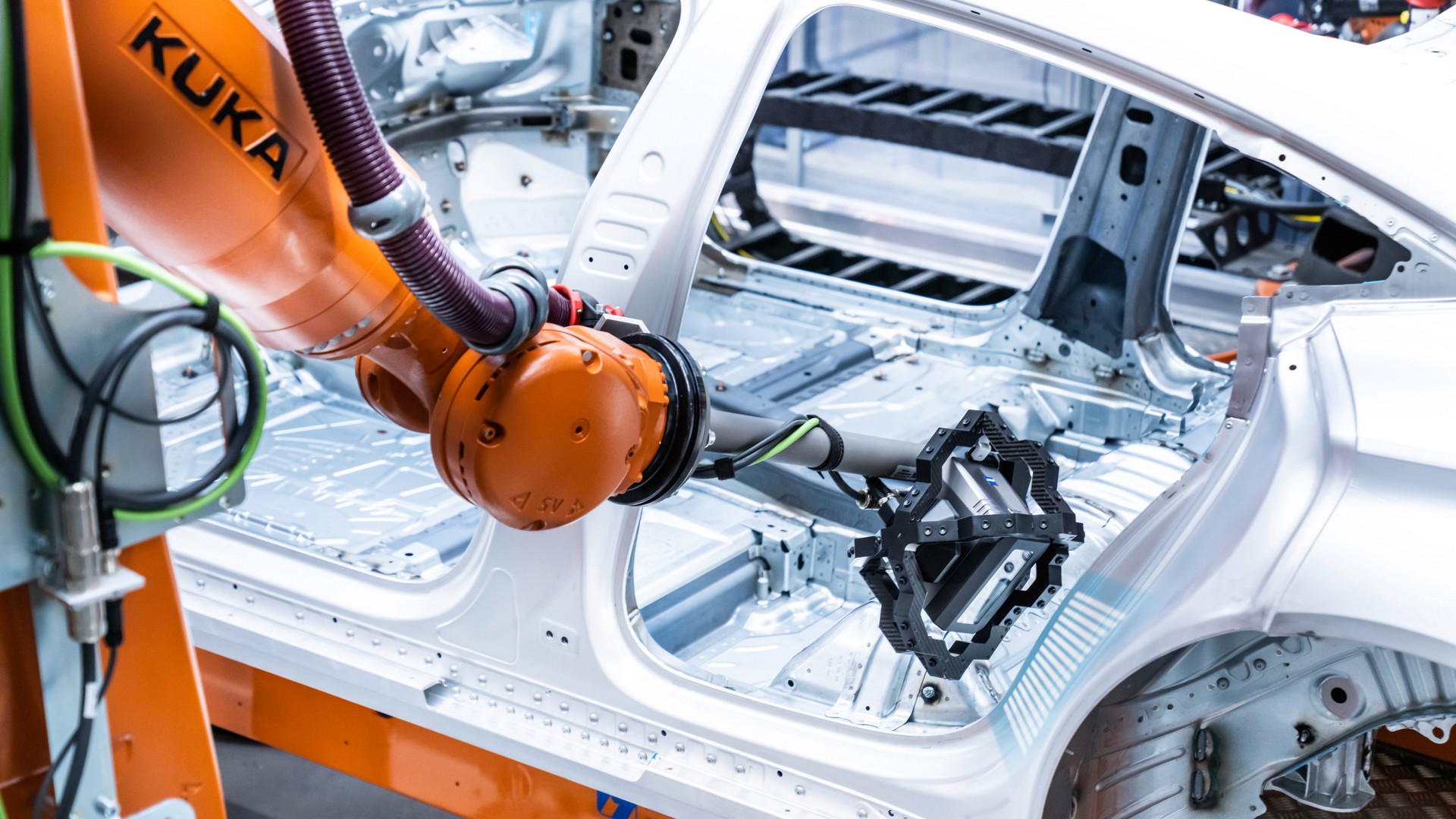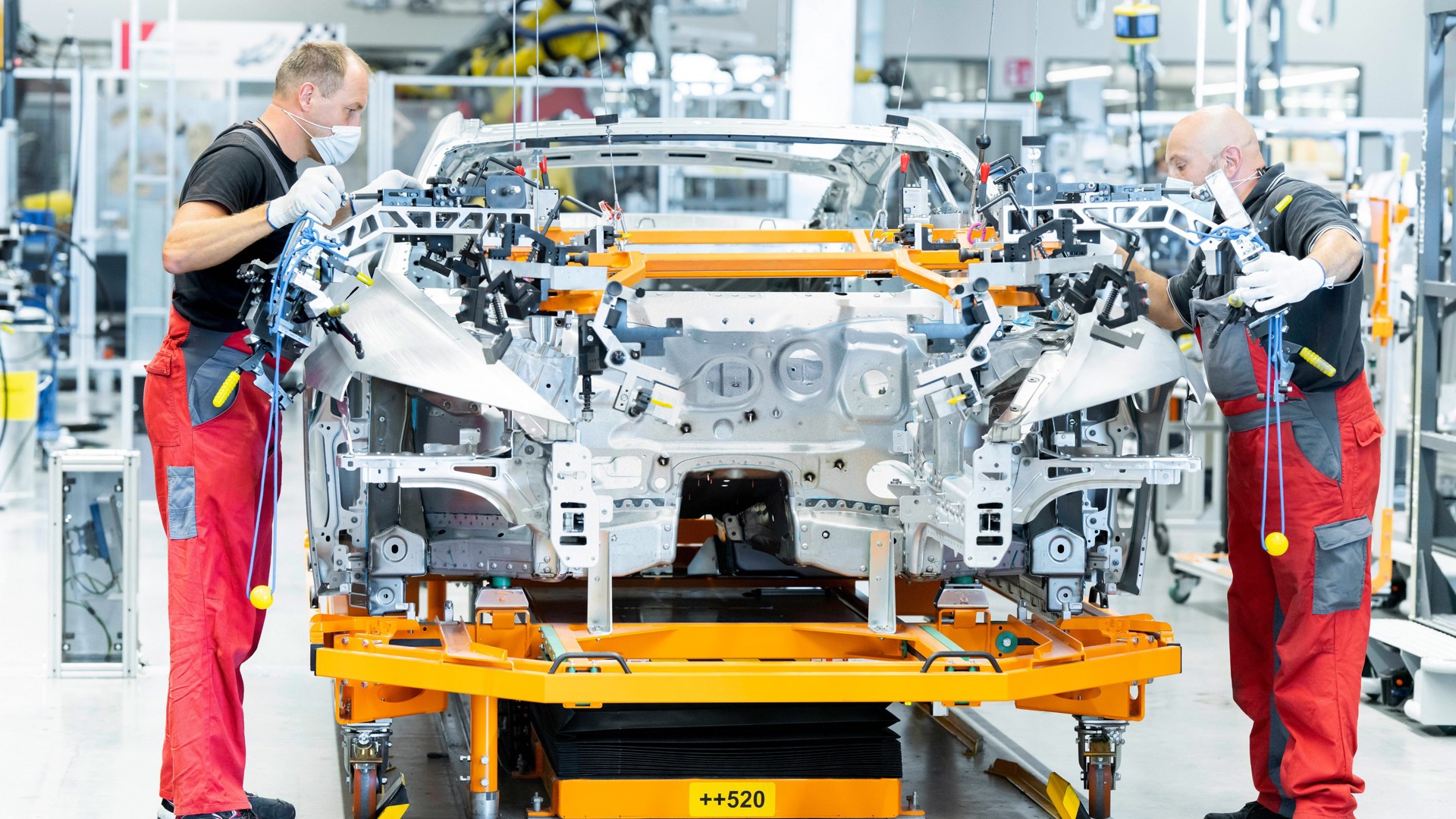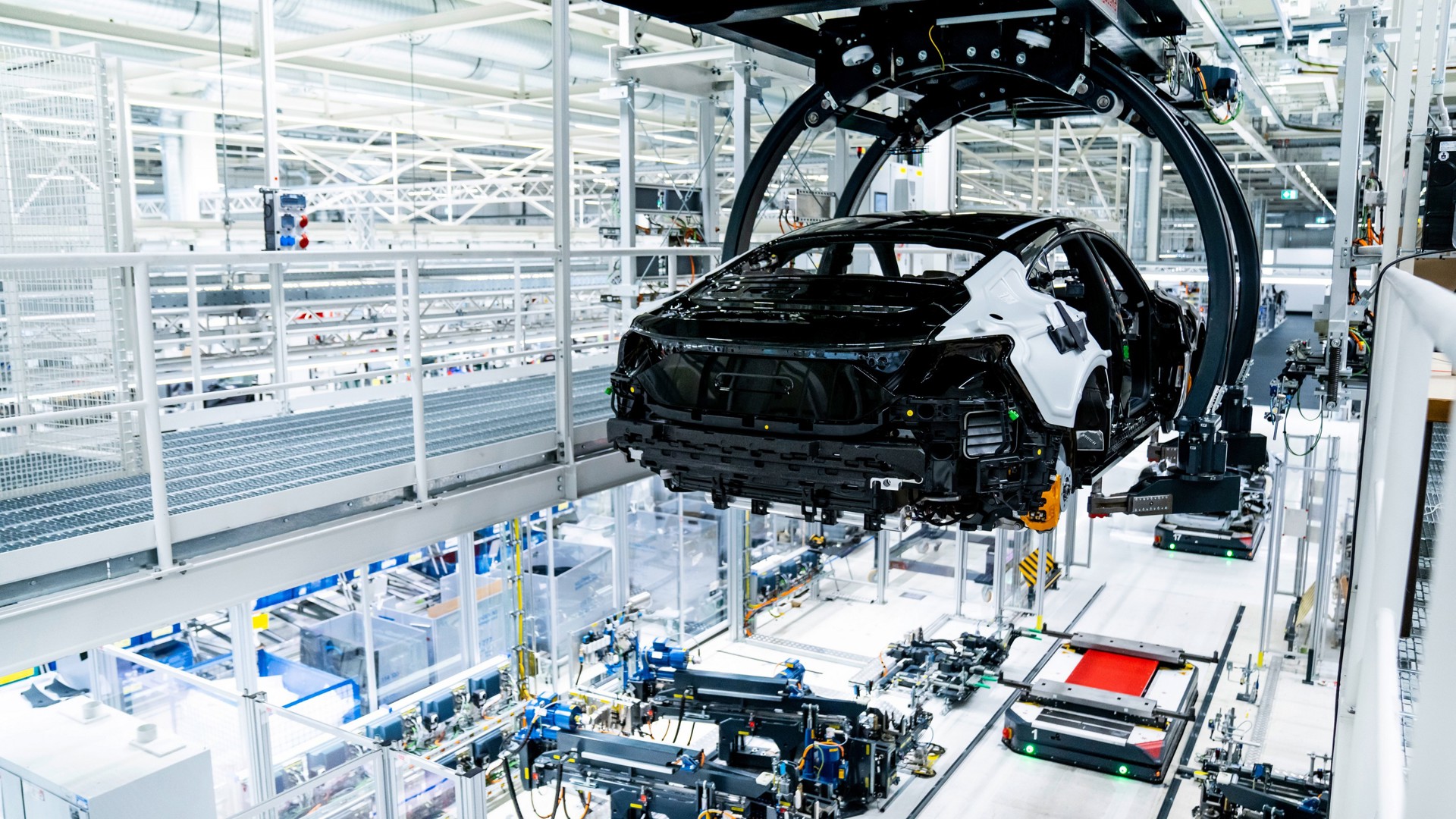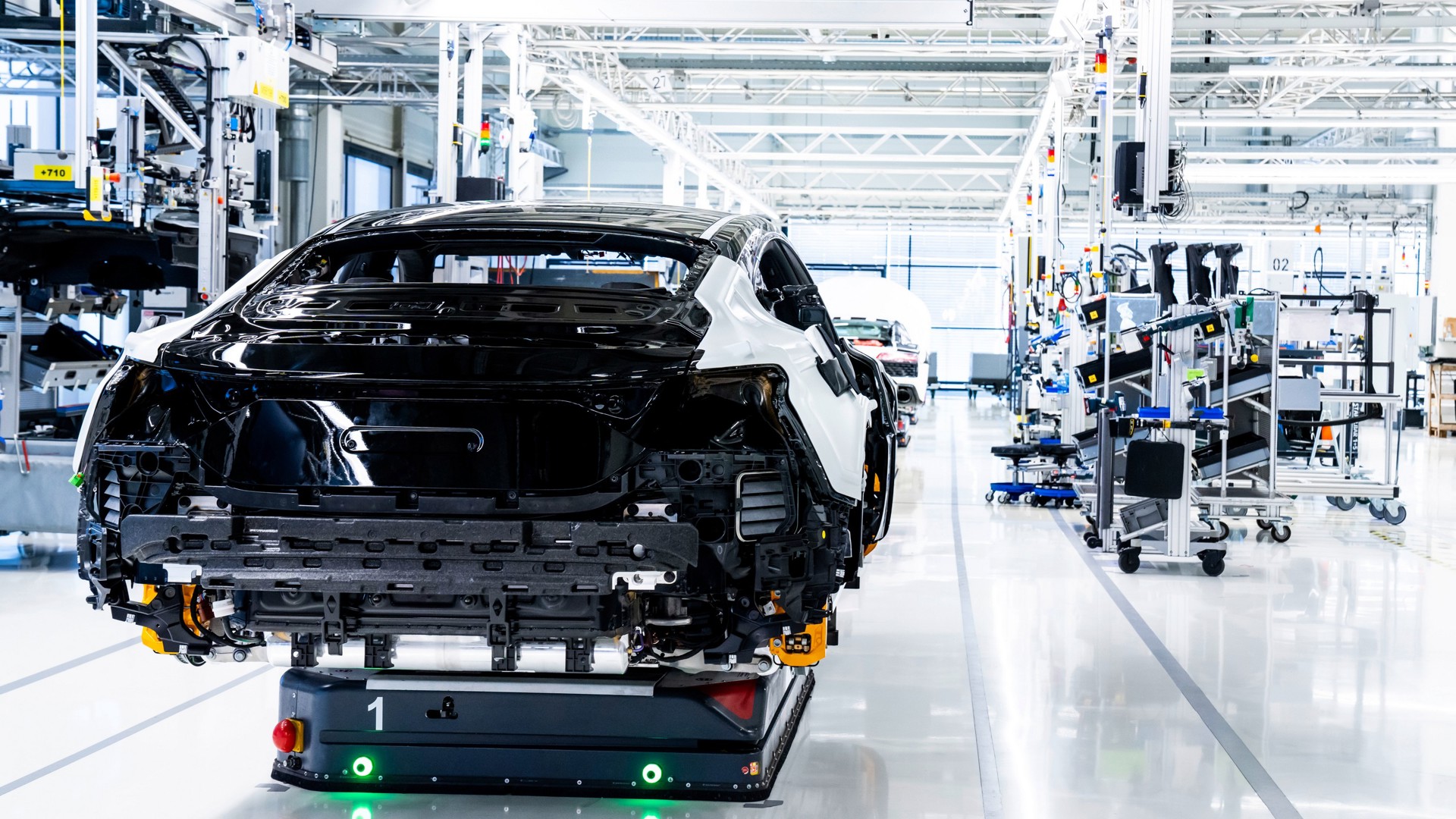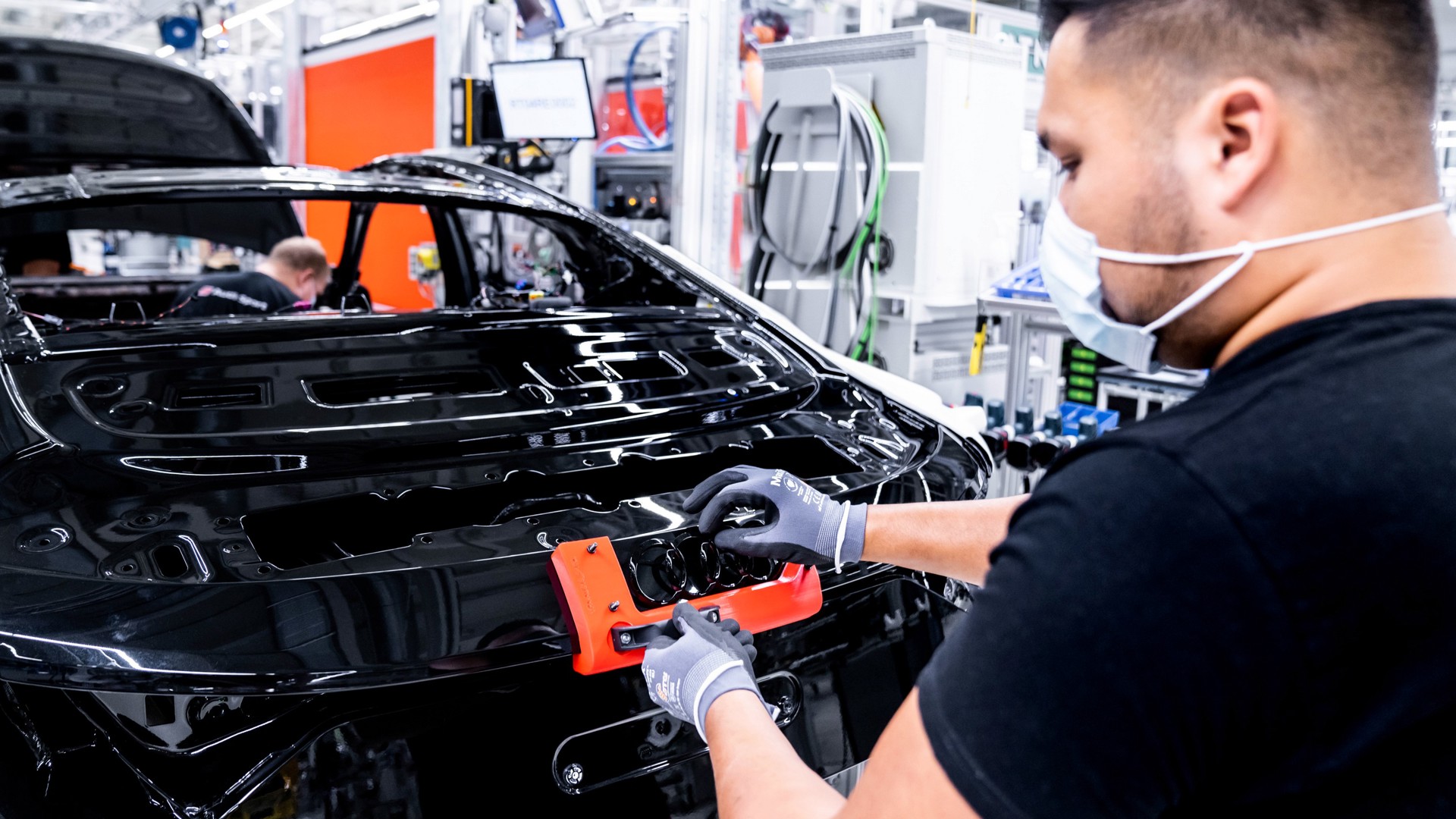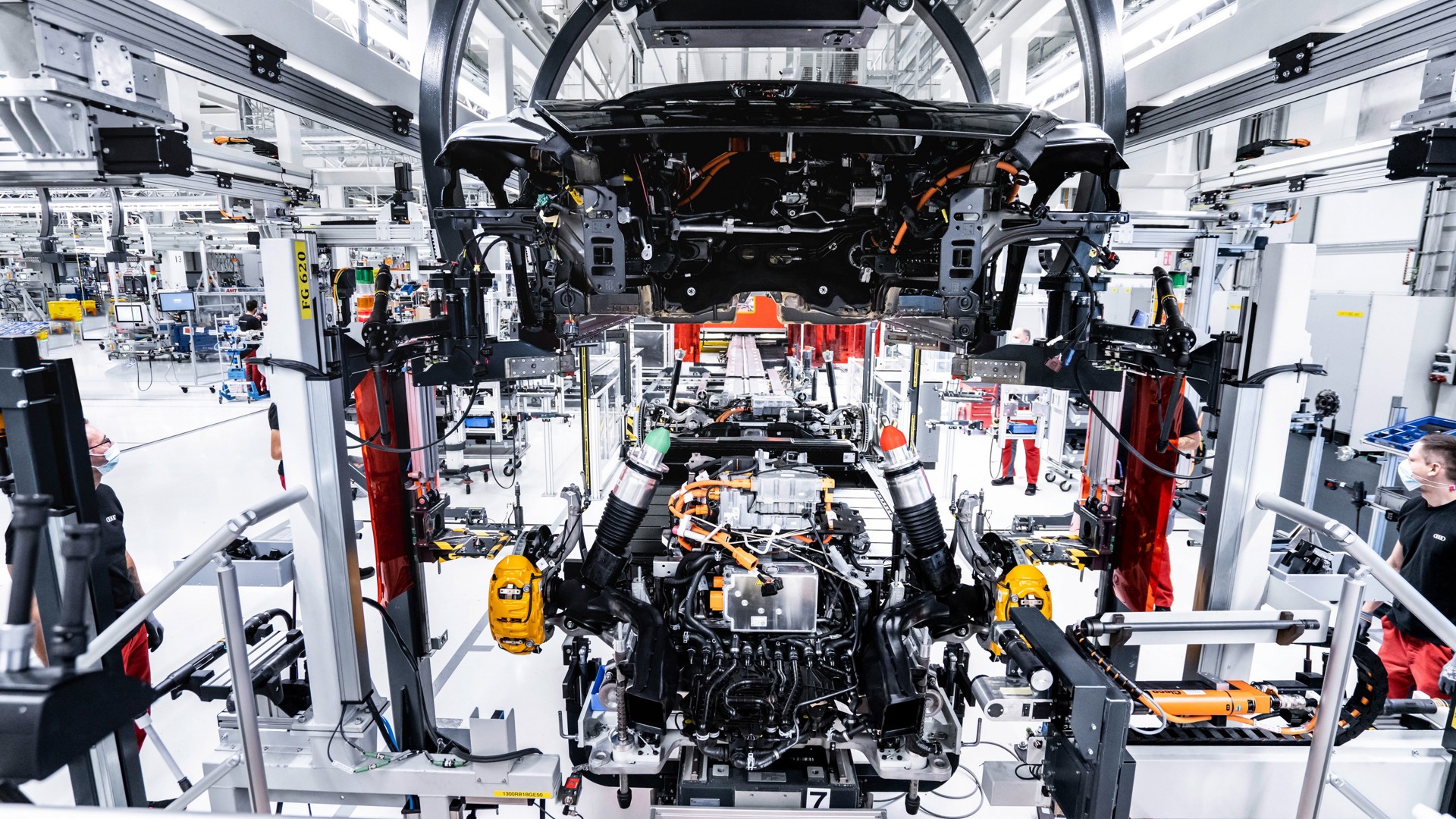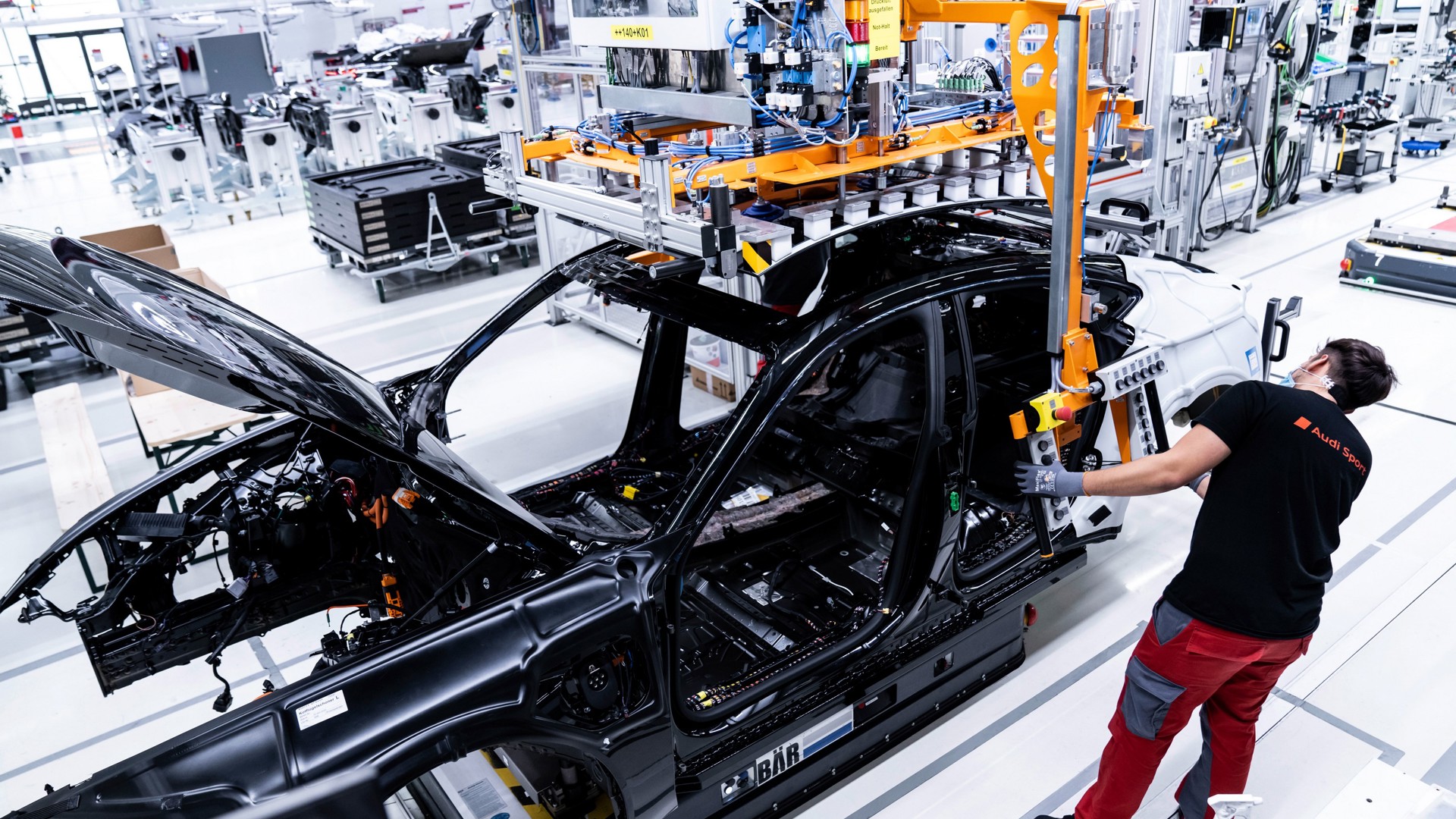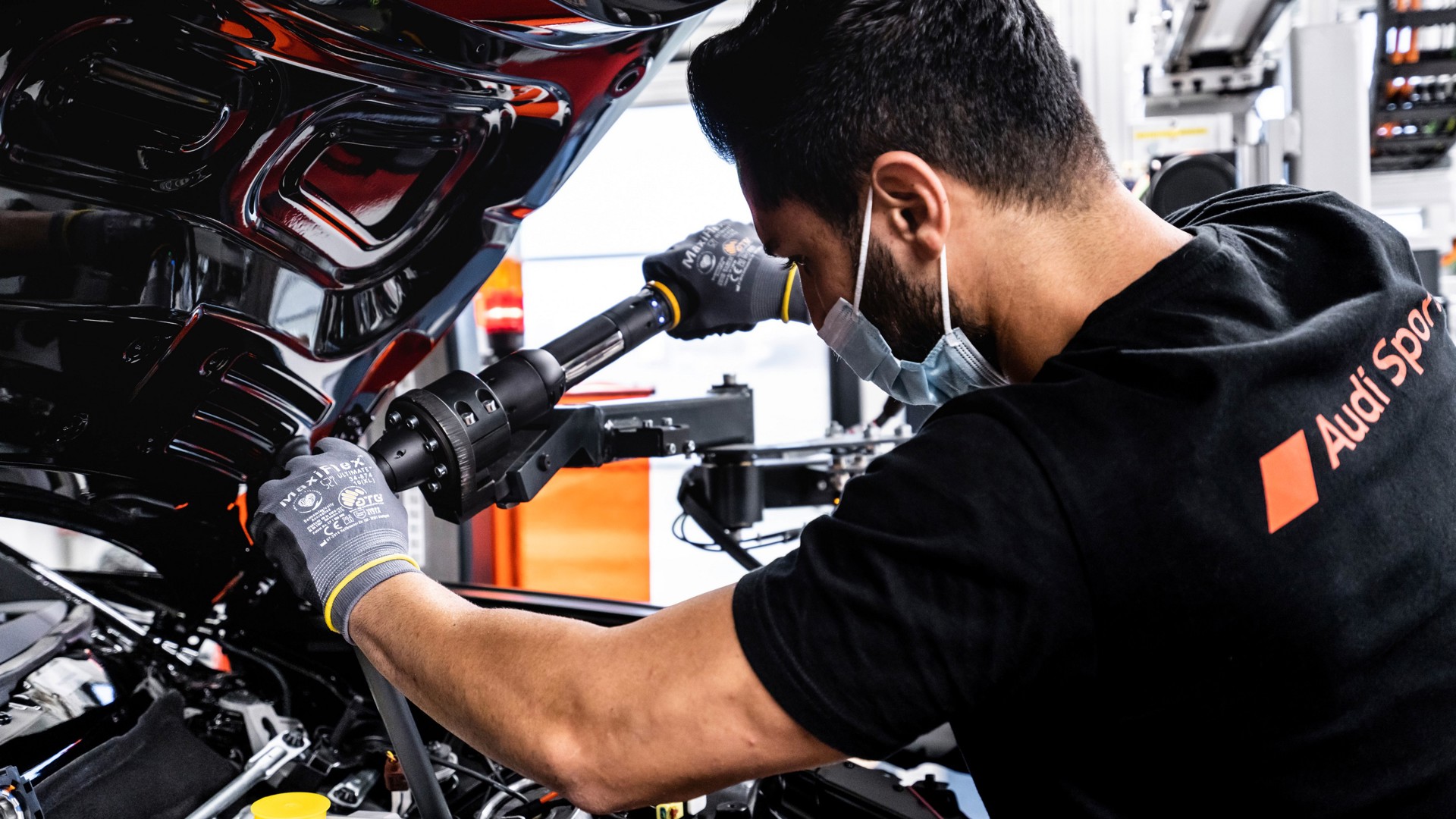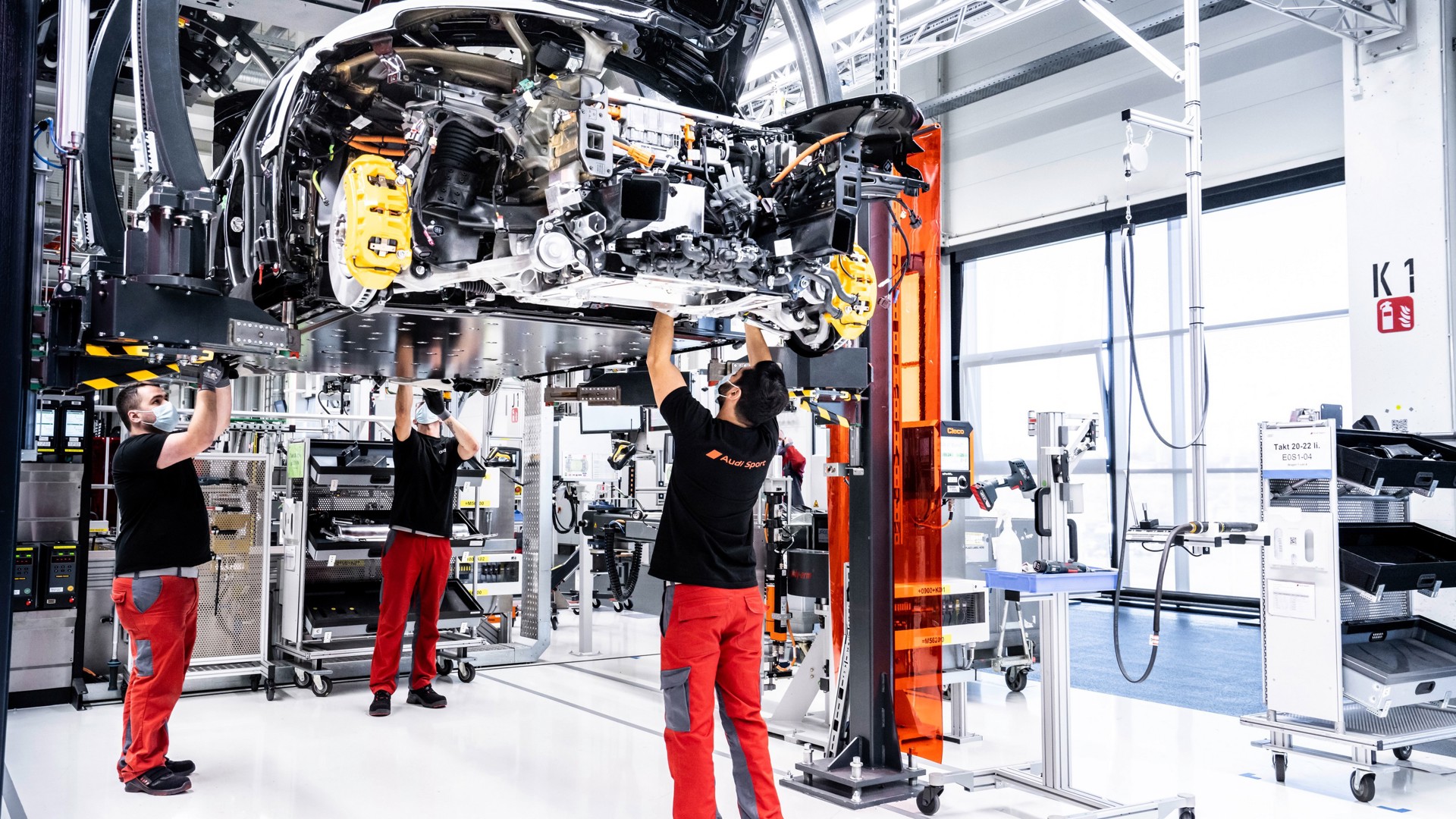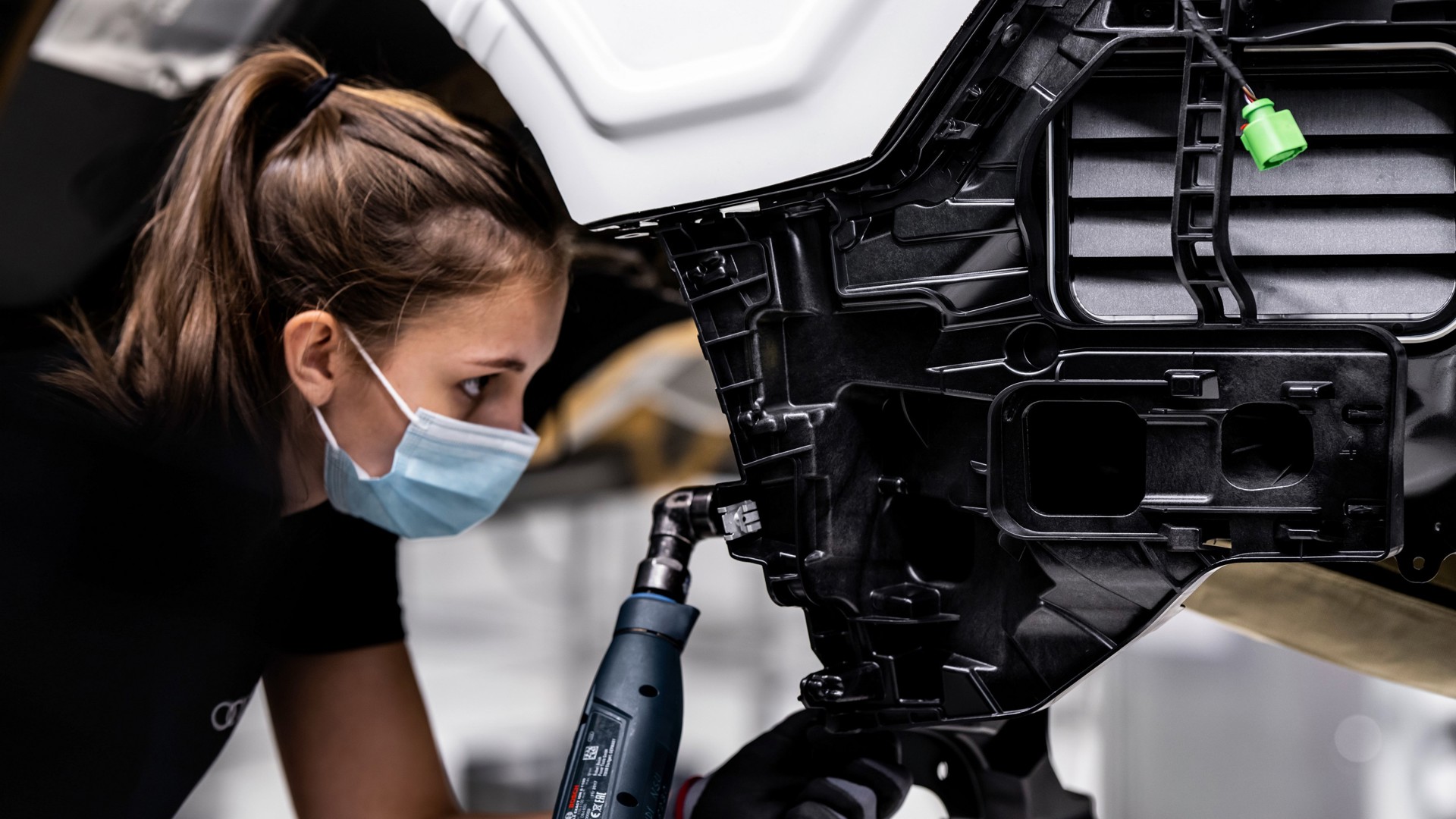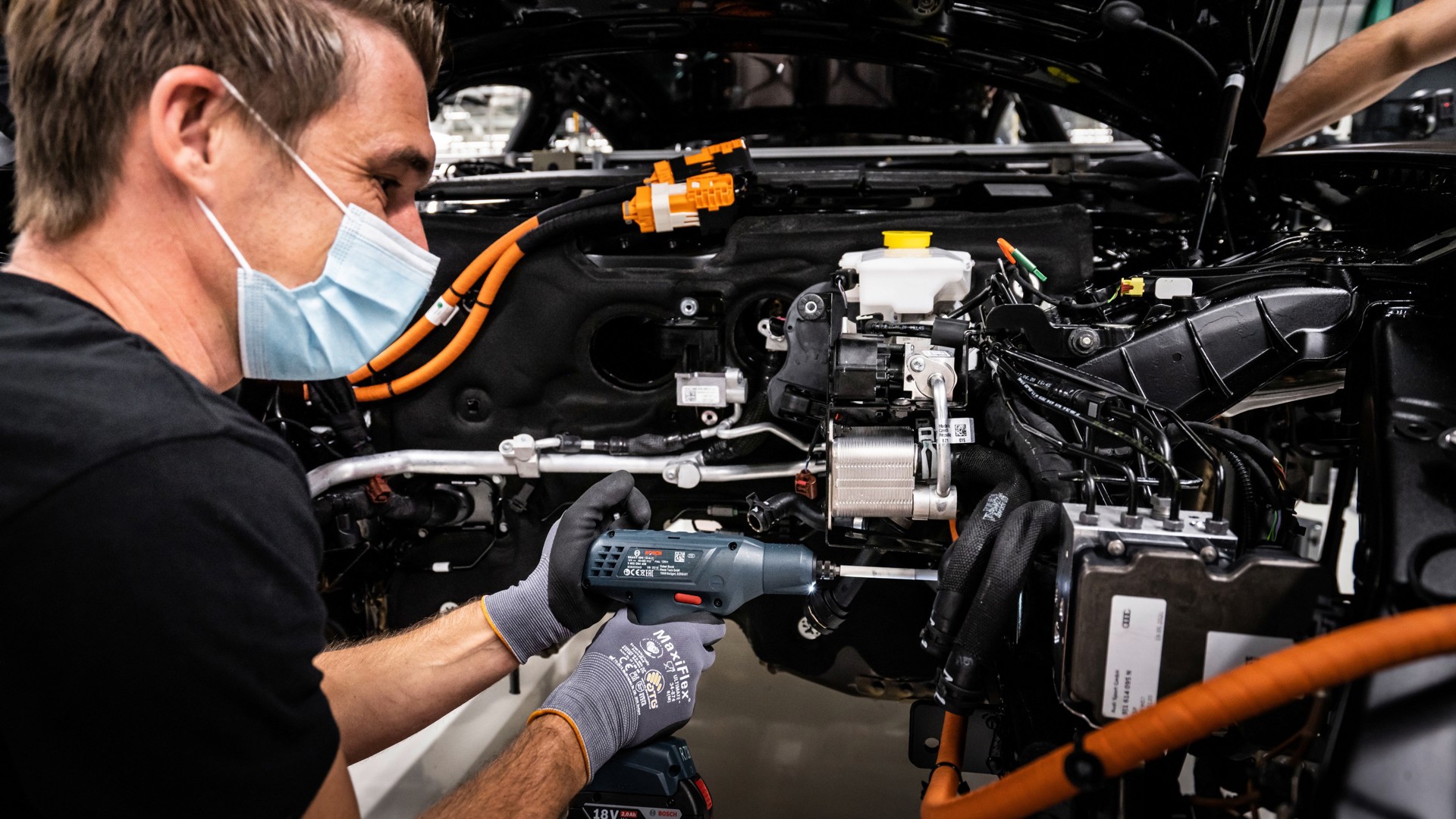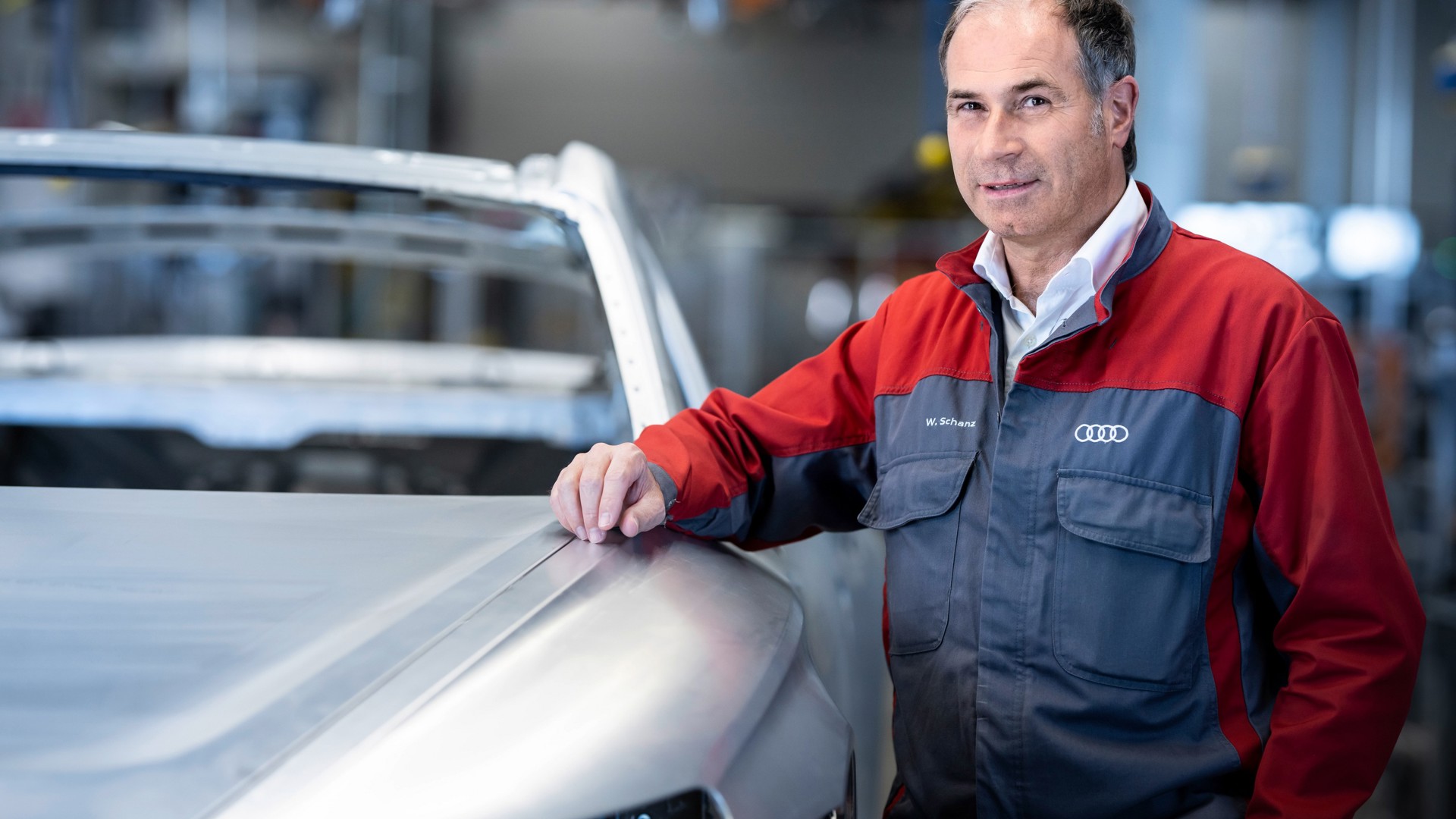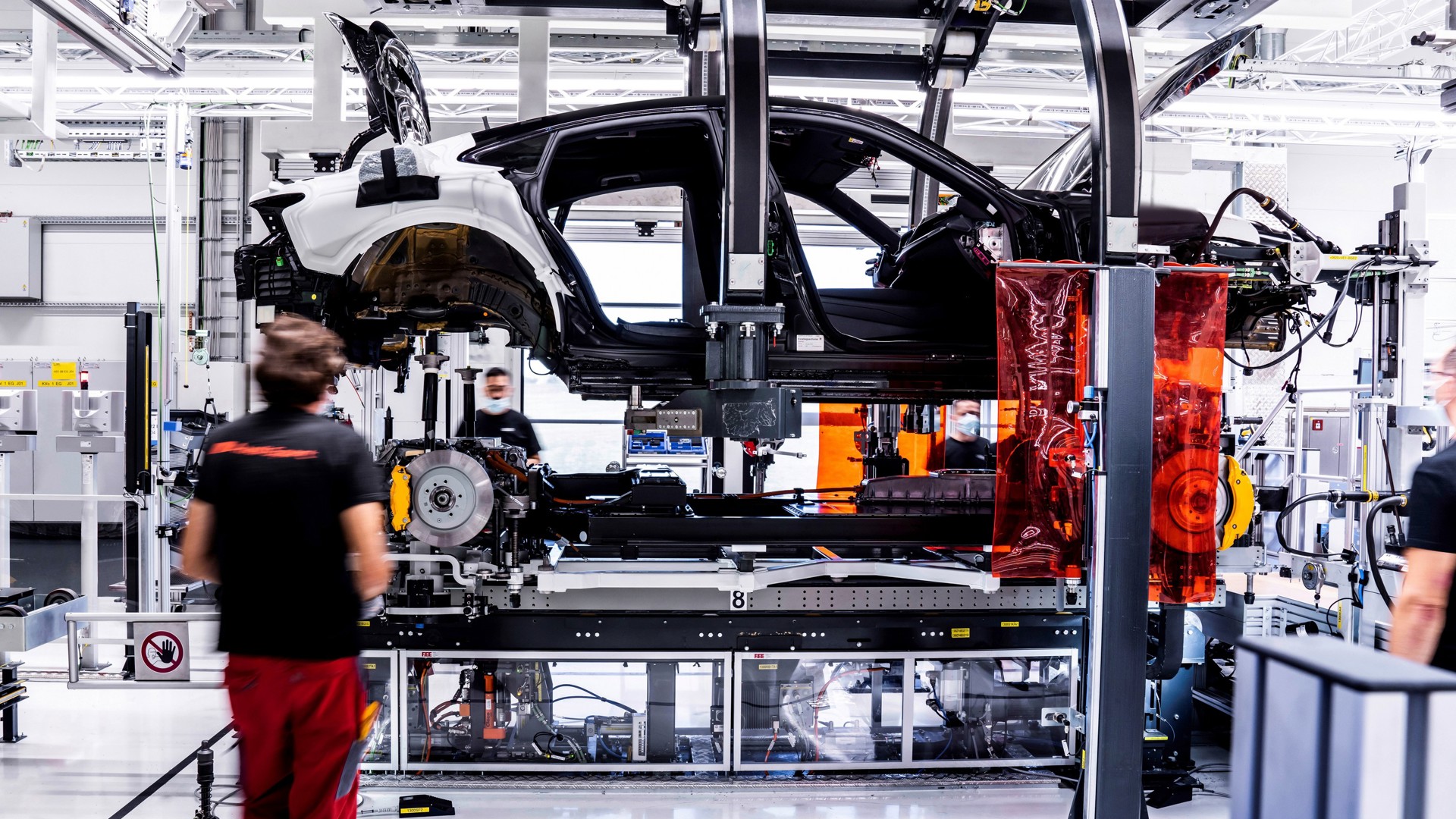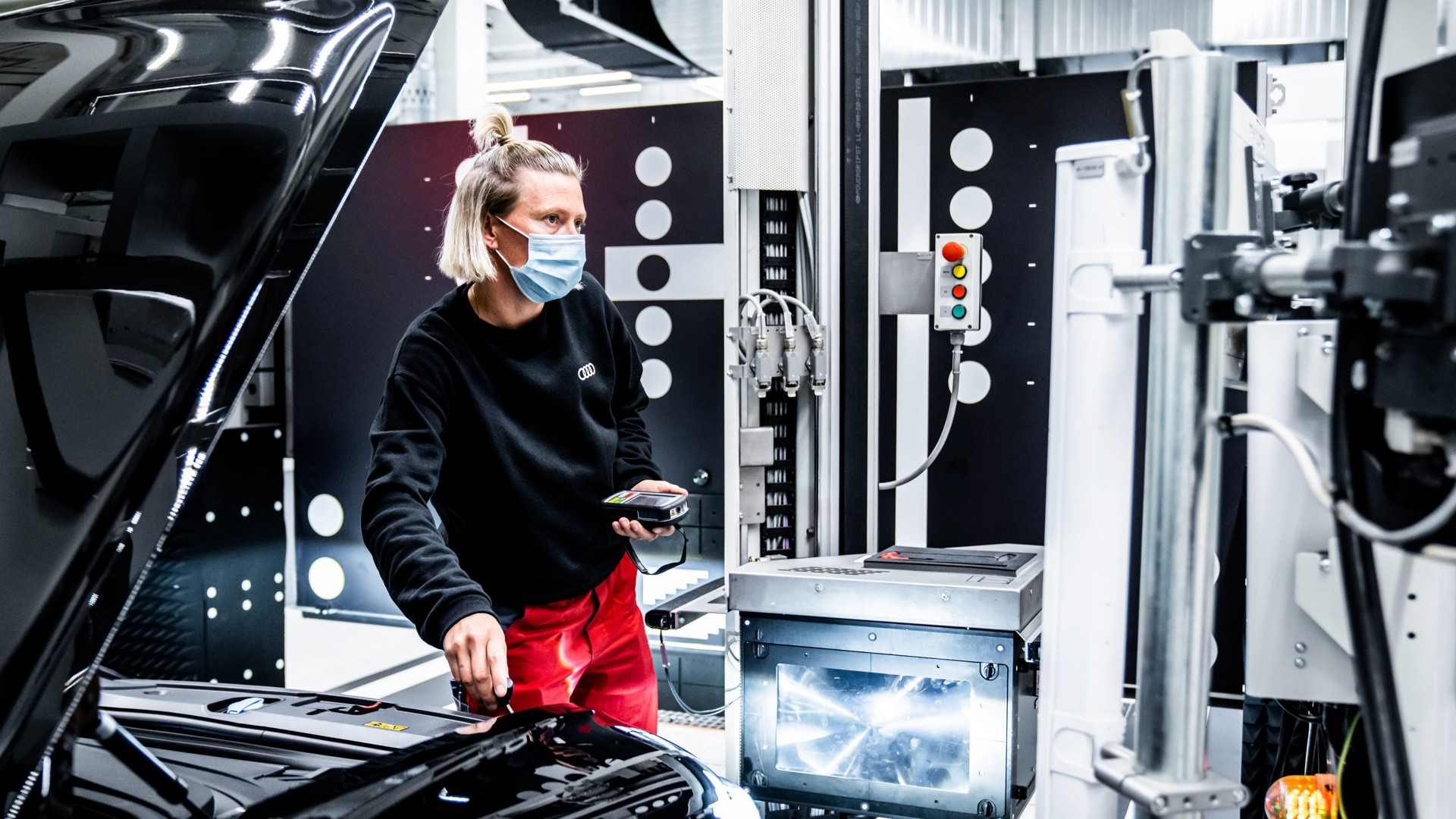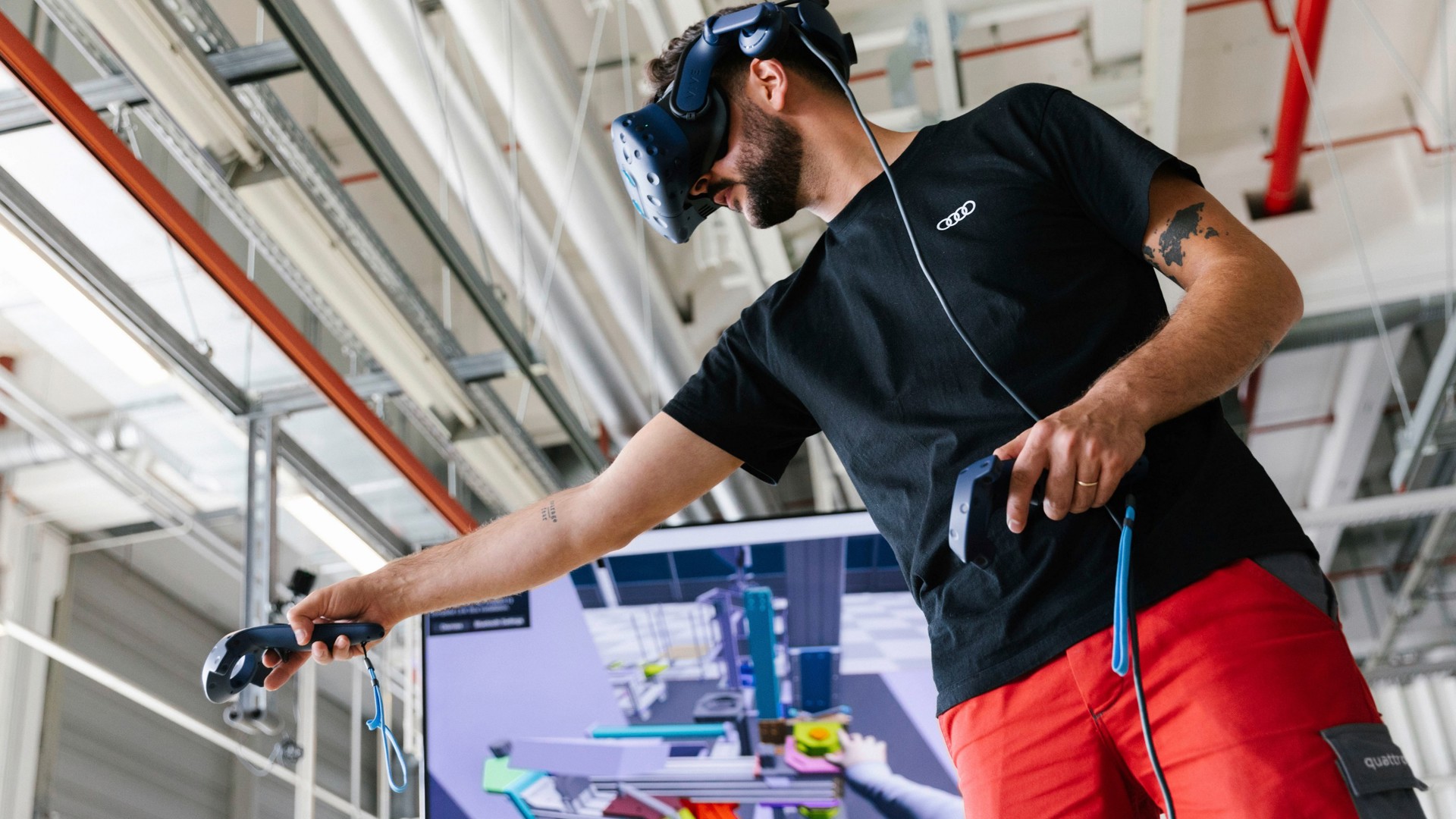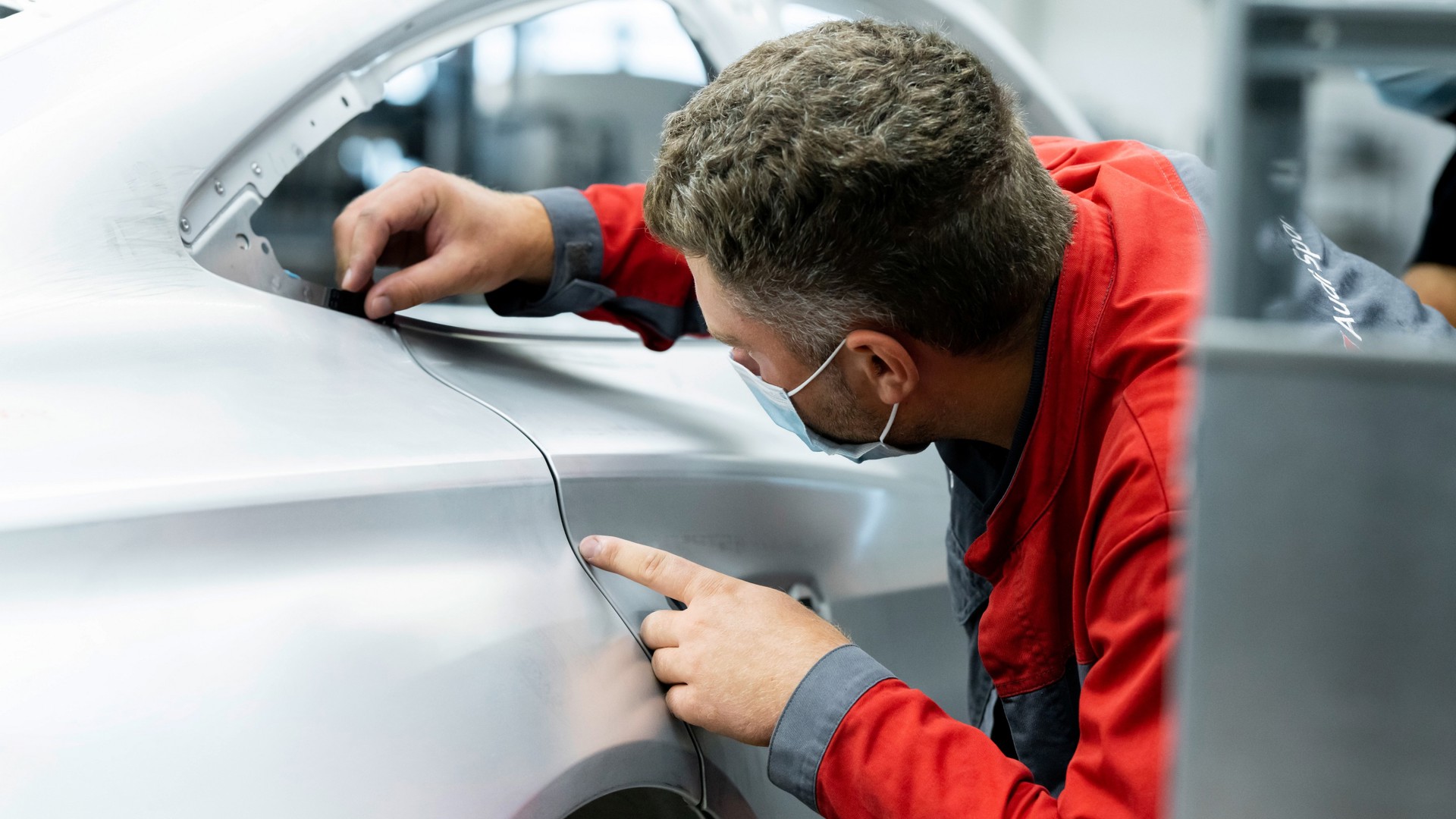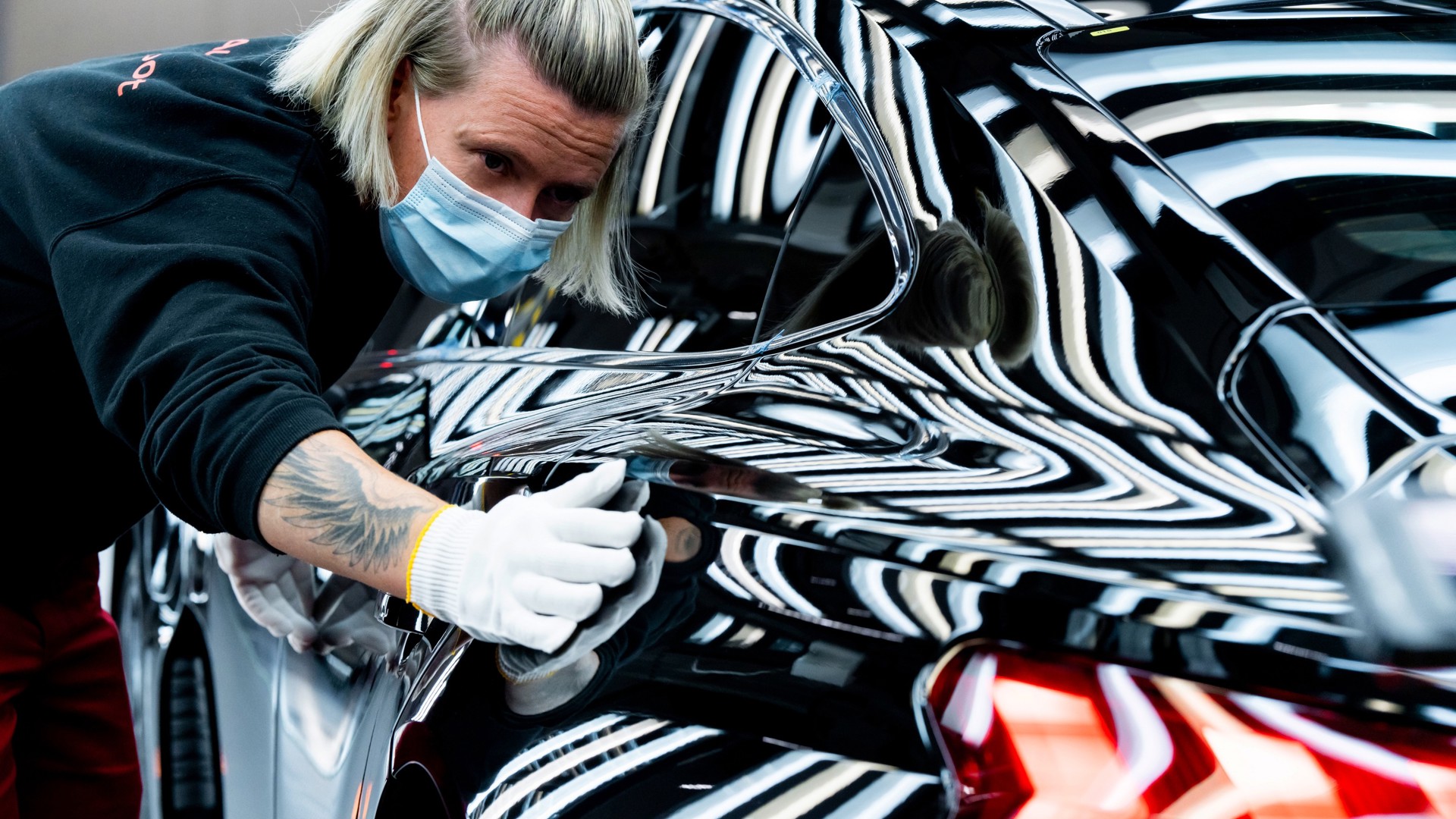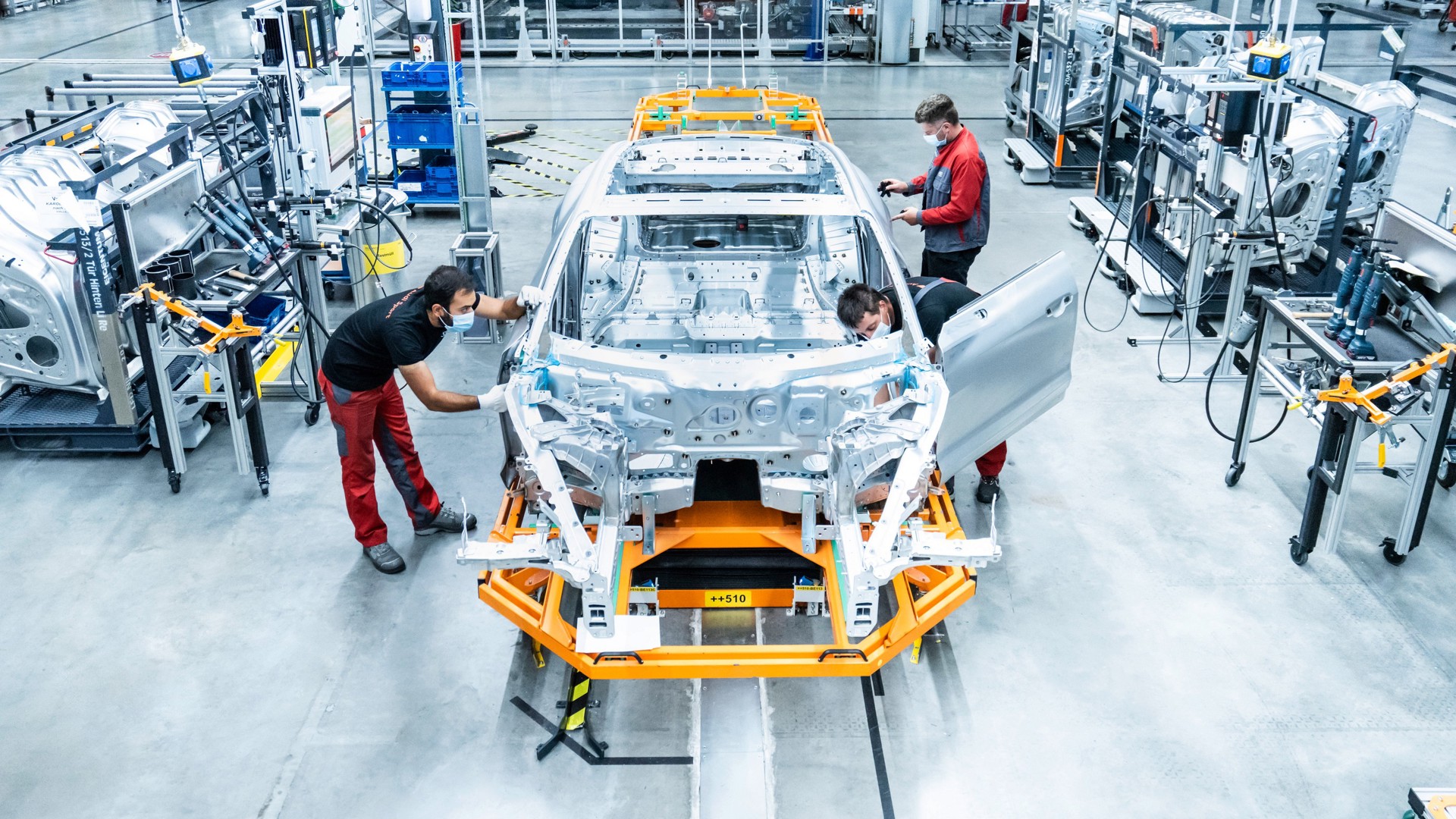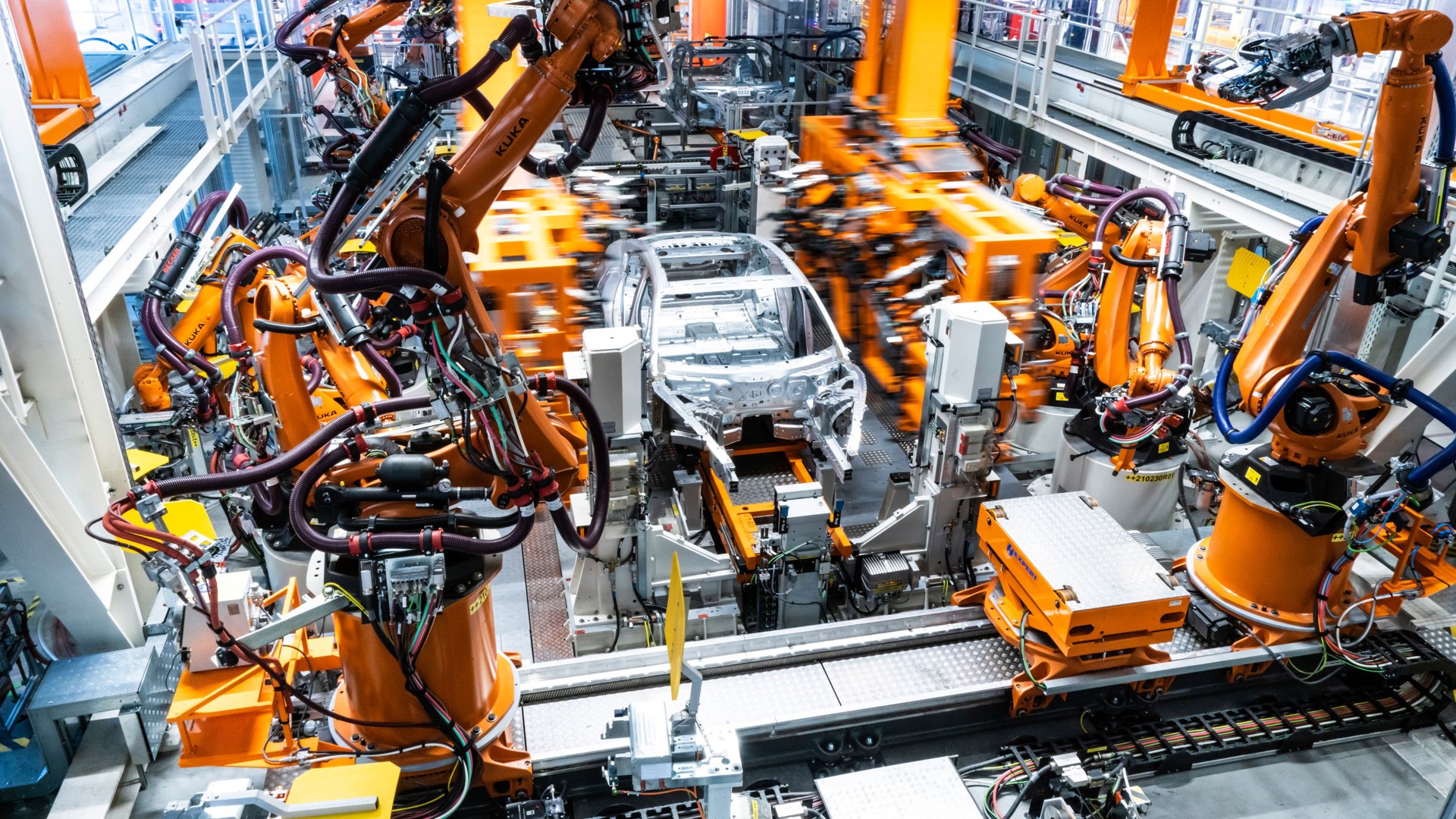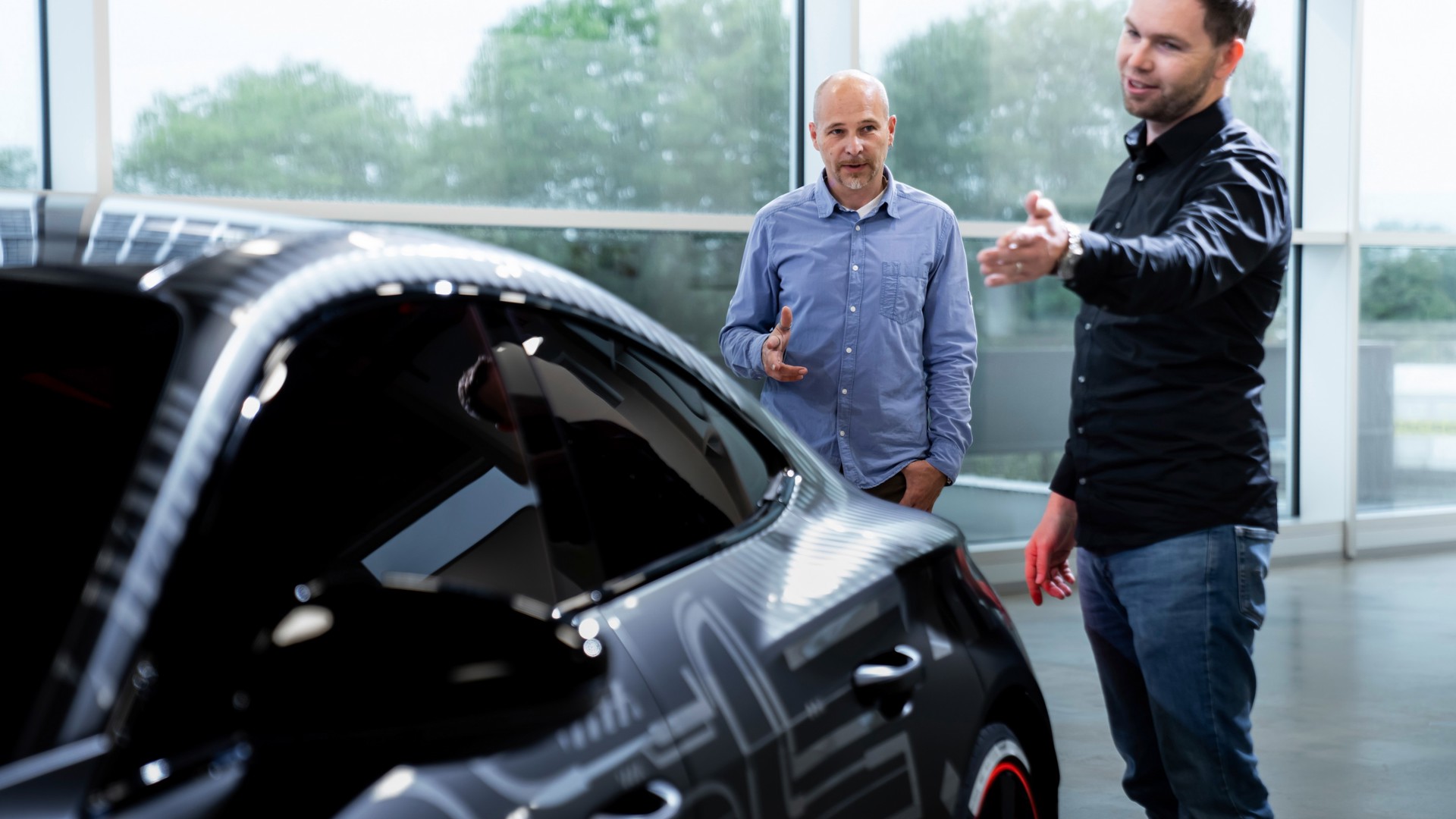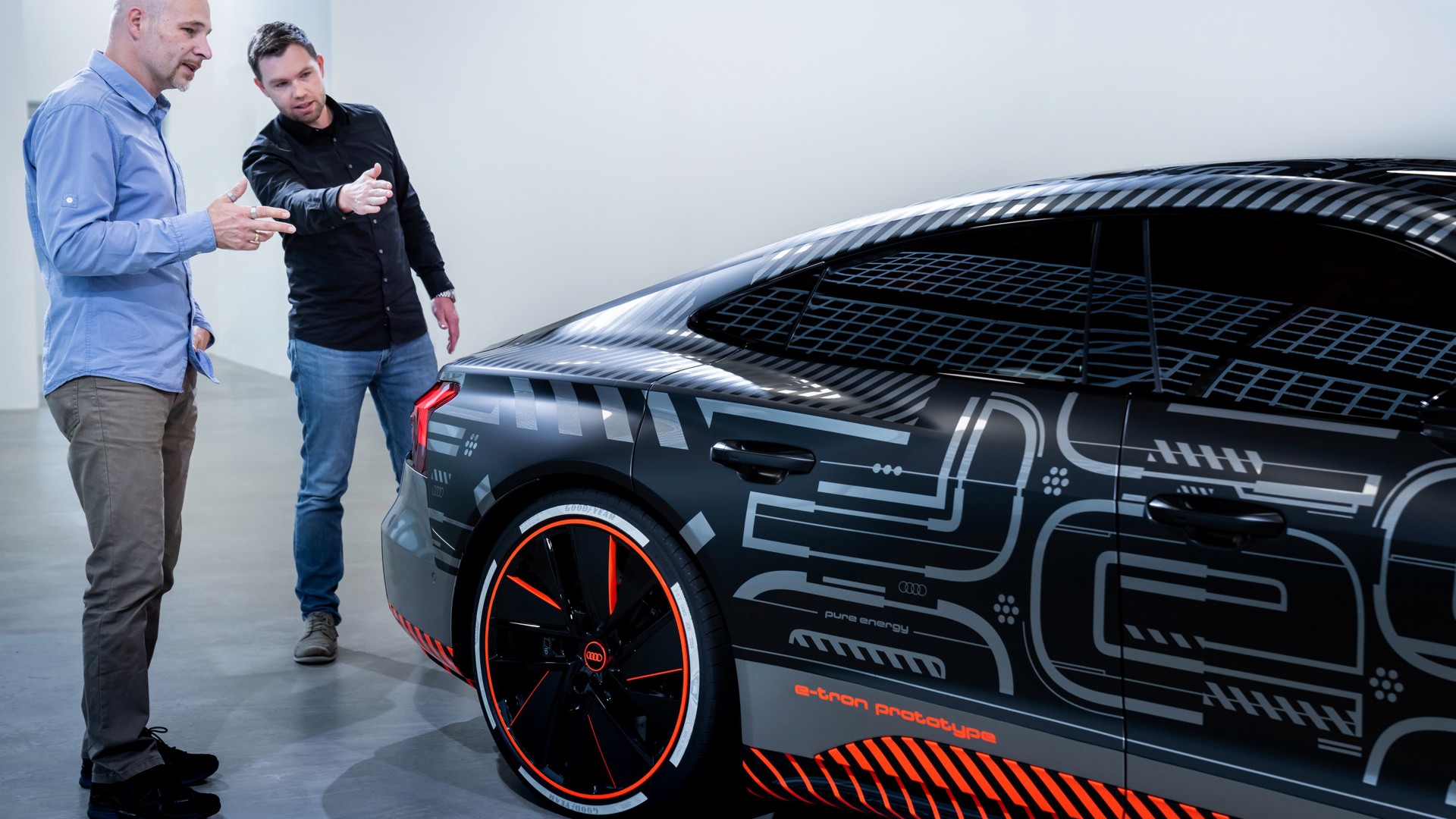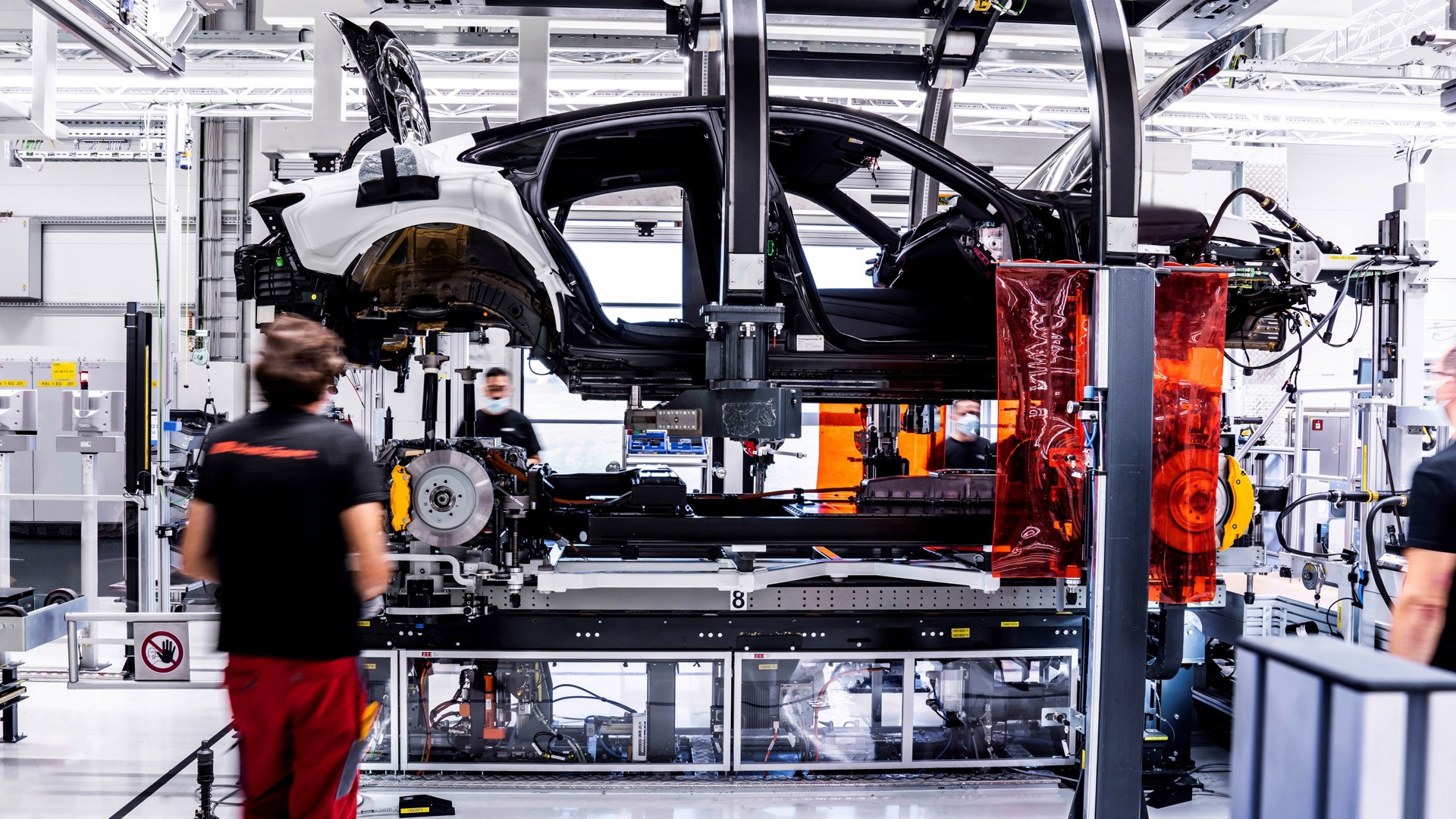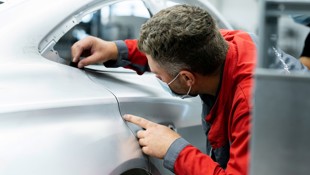In making the Audi e-tron GT, an electric four-door coupe, the brand had plenty of development hurdles it had faced many times before. But it also had a pair of new ones.
EVs make no sound, and because a car's sound is so closely tied to the emotional connection a driver feels to it, Audi had to figure out how to create emotion from sound in a vehicle that made very little of its own. The German brand also needed to make sure that its most high-tech model still had the craftsmanship that buyers demanded. Here's how Audi sorted those issues out.
We'll start with the sound, because to a brand that takes pride in the passion its products generate, the soundtrack is one of the key tools to help bond car and driver. Audi sound developer Stephan Gsell said that "the sound needs to fit to the vehicle. We have a strong visual design, and we'd like to have a strong acoustic design as well. We want to transport emotions with the sound."
To generate this soundtrack, Audi started with brand new software. None existed off the shelf that could do exactly what the team needed, including handling the 32 different audio tracks at a time. The basis of the e-tron GT's sound is a strange one, a 30-mm diameter hollow tube, three metres long, bent and twisted, with fans on one end, in order to make the sound Audi wanted. We'll warn you, though, once you hear that sound, you'll never unhear it. While Audi developers initially tried proper musical instruments, it was decided that a more technical sound worked better to fit the vehicle.
Pleasing for Now and Later
Because an EV's sound is heard all the time, it can't be something that someone will quickly get annoyed with. Would it be cool if it sounded like, say, a Star Wars Podracer? Yes, but not when you're hearing it all day every day. The sound needs to be pleasant no matter what, to inspire emotion and connection instead of frustration, and it needs to meet a tome of various laws and regional requirements. Those differences actually mean a slightly different sound for Europe and North America. It's not necessarily more work than what goes into making a combustion car make the right noises, but it's a lot different. And it allows a great deal more customization.
The e-tron GT's sound can be slightly customized by the driver, as it changes with the drive mode selected to reflect a proper amount of aggression or refinement. It also reacts to the throttle application, vehicle speed, and a host of other variables programmed in to add emotion.
Speakers inside and out, and separate controllers for interior and exterior sound, work to help pedestrians locate the e-tron GT while giving occupants an immersive experience. More sound generators will be available eventually to add to the experience and surround sound.
Imagining Production Virtually
When it comes to building the vehicle, Audi seized the opportunity to put together the e-tron GT at Audi Böllinger Höfe, a flagship plant opened in 2014 that offers unique opportunities for Audi to pioneer new production methods and techniques. Because it was already thoroughly 3D mapped, for example, Audi was able to use new virtual reality prototyping to work out the entire production process without building a physical vehicle. This technology will soon be rolled out to all of the VW group facilities. 3D printing has allowed factory experts to reduce design time for pre-production jigs and fixtures by 80 per cent, letting the factory get to full production sooner.
The plant was already home to the low-volume R8 supercar, and putting the two very different vehicles on the same final assembly line also posed a challenge. Twenty steps were added at the plant, making for a total of 36 stations, spacing out some of the R8's steps and combining some of the GT's.
To put together the chassis, 34 different robots do 85 per cent of body welding, with the remainder (and the most complicated) done by hand. A new two-way framing machine with 32 tools makes two passes to complete the car's body, a job that would previously have required the passes to be done separately, meaning two machines and double the space and more time.
New production processes allow a stamping draw, or the depth of the finished single aluminum part, of 35 cm, which Audi says "has never been done before," and pushes the limits of manufacturing technology. Bodyshells are welded in Böllinger Höfe, sent several kilometres to Neckarsulm for paint, then shipped back to sit in the plant basement while waiting for assembly.
Measure 350 Times, Assemble Once
Making sure the GTs meet Audi's standards, 350 separate points are measured using 10 cameras calibrated to detect the exact precision of each point to just 0.2 mm, much thinner than a human hair. If that's not enough, workers look over every single car, checking panel gaps and alignment with the original QC check: Their eyes. They also check them with proper measurement tools. Audi says many of these workers are former carpenters because of their sensitive, trained eyes and comfort working with materials. It's not spoken, but Audi seems to be very aware of the build quality concerns brought against the current champion of the electric vehicle segment.
Marrying suspension, driveline, and body are 74 connection points, each one made by a worker using a self-positioning power screwdriver to ensure precision and accuracy.
Once each GT is complete, it passes through a water test where 25 litres of water per minute douse the e-tron GT for eight minutes total, pressurized to around one and a half times atmospheric to help spot leaks. By then, the cars have been driven along a test surface and 40 km of public roads to listen for any creaks, squeaks, or rattles, and all of the sensors have been calibrated (a hundred more than the R8 V10) and the moving parts moved. Then the cars pass through two separate light tunnels where employees make their last visual checks.
So when do we get to see and hear the result? Audi says that it's finishing the last pre-production cars soon, and that means that series production is nearly ready to begin. We'll see the unmasked e-tron GT early next year with the car expected to hit the market in the first half of the year. There will also be an RS version. How many can the plant build (or is that how many is Audi prepared to build)? "As many as are ordered," it said, playing their electronic cards close to the chest.
